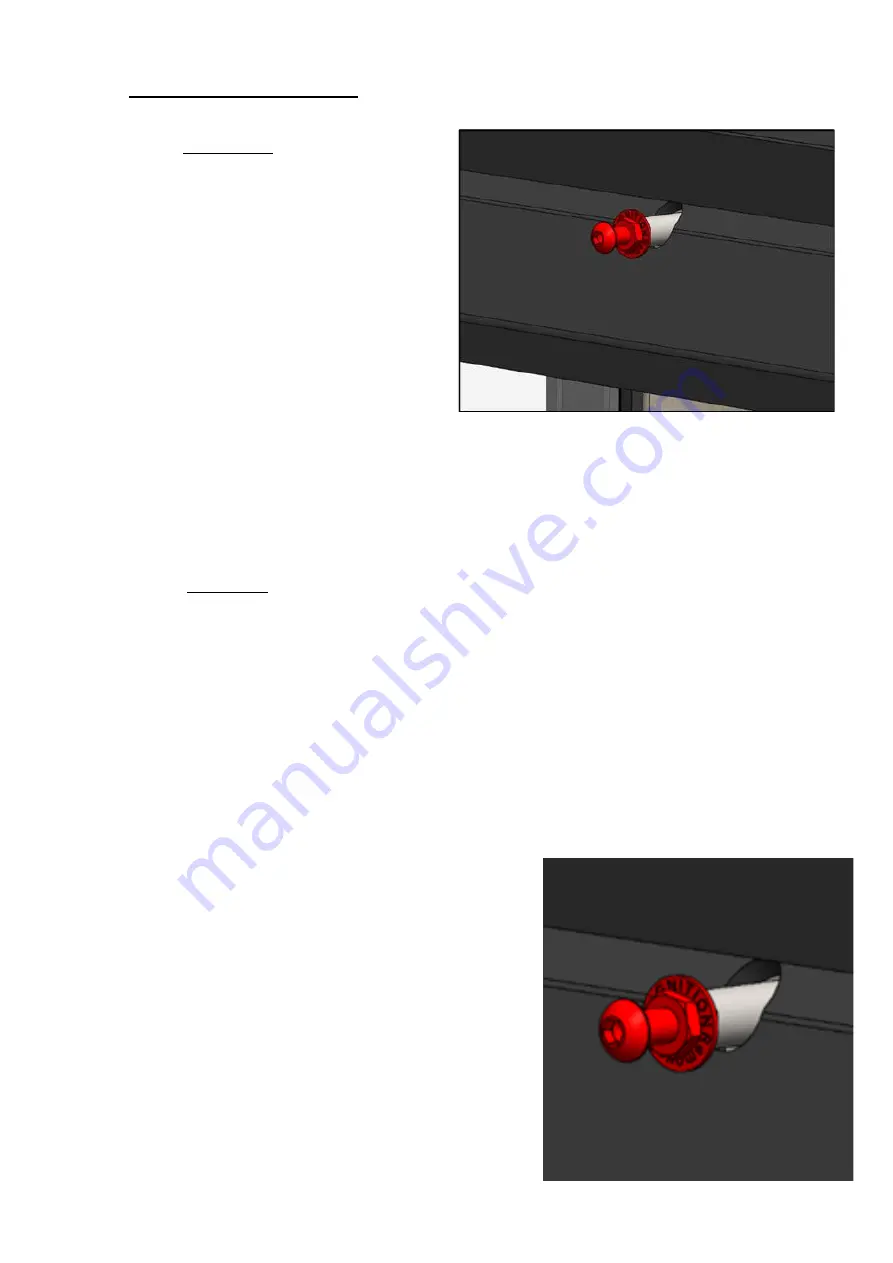
21
Purevision LPV Freestanding
Issue 01 02/21
8.0
Active Baffle System
8.1
Description:
The Purevision LPV
range, is fitted with an internal
stainless steel active baffle
assembly which fulfils a number of
functions:
a)
IGN Position
–
end operating rod
section removed:
Direct access of ignition
heat into flue-way to start up cold, inactive
flues in a quicker and more user-friendly
way.
b)
Auto Position
–
end section in place:
Opening of the flue way when refuelling to
enhance the fume removal capacity of the
stove when the door is open.
c) In the case of a low draught flue where it has been improved as far as possible by
conventional means (e.g. terminal, increasing height and diameter and reducing bend
severity and number where possible) the removable sections of the main baffle can ease gas
flow to enable safe use of the stove where otherwise it may not be possible to continue to
use a wood burning stove.
8.2
Operation:
The baffle mode is controlled by the stainless steel rod that protrudes through the air
wash panel centrally inside the door of the stove.
The removable end section can be
operated when hot only by using the stove gloves supplied with the stove.
A)
Removing the end section of the operating rod to activate the
IGN
position allows the
baffle flap to remain in the open position regardless of the door position, thereby
allowing products of combustion straight into the flue pipe during ignition. This heats up
the flue quicker to generate draught sooner and enables lower emissions to be produced
during a shorter ignition phase.
B)
Placing the removable end section back into the end of the baffle operating rod selects
the
AUTO
position where the rod will be depressed by the door as it closes. This causes
the baffle flap to open when the door is open and closes it when the door is closed.
8.3
Adjustment:
Firstly check that the baffle is correctly sitting
on its mountings and correct any errors and
remove any build-up of ash or debris. The
degree of closing of the baffle flap is controlled
by the operating rod and it should be fully
closed when the door is closed. The operating
rod is adjustable by screwing in and out the
locknut on the removable end section as
highlighted in red in the illustration. Screwing
the rod outwards (counter-clockwise) causes
the baffle to close further when the stove door
is closed. Screwing the rod in (clockwise)
causes the mechanism to become shorter
thereby pushing the baffle less distance when















































